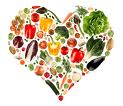Archive for May, 2010
TOP TIPS FOR HEALTHY EATING
Monday, May 31st, 2010What is BMI?
Monday, May 17th, 2010OBESITY & WEIGHT LOSS
Most of us would admit to wanting to lose weight. Today’s lifestyle makes weight gain something of the norm.
Research shows that we all have different ways of losing weight, but when it comes to keeping weight off, there are three main factors which are common in those that succeed: regular weighing, a low-fat diet and regular exercise.
At Nutritional Concepts you will be given time to explore ways that would be suitable for you to lose weight. Your diet will be analysed in detail to ascertain your calorie intake and how you can make simple changes to your diet to reduce your energy intake without having to make unrealistic changes that you cannot maintain.
What is Body Mass Index (BMI)?
Doctors, nurses and other healthcare professionals around the world use BMI to determine whether a person is overweight or clinically obese. Obesity now affects 16 per cent of women and 20 per cent of men in Ireland, according to the North South Food Consumption Survey (2001). A further 33 per cent of men and 46 per cent of men are overweight. This means they have a greater risk of developing heart disease, diabetes, stroke and certain cancers.
A significant drawback with BMI is that it doesn’t take into account a person’s body fat content which is an indicator of the risk of future health problems.
Adults and BMI
Your BMI is calculated by dividing your weight in kilograms by your height in metres squared. You can estimate your BMI using our calculator. The result you get is then classified into the following groups
| Recommended BMI Chart | |
| Underweight | BMI less than 18.5 |
| Ideal | BMI 18.5 – 24.9 |
| Overweight | BMI 25 – 29.9 |
| Obese – should lose weight | BMI 30 – 39.9 |
| Very obese – lose weight now | BMI greater than 40 |
A BMI measurement is not as accurate if you’re an athlete or very muscular (muscle weighs more than fat) as this can push you into a higher BMI category even if you have a healthy level of body fat. It’s also not accurate for women who are pregnant or breastfeeding, or people who are frail.
Speedy Spuds
Monday, May 3rd, 2010Jacket potatoes can provide a speedy, healthy and tasty meal in a matter of minutes but the benefits can last much longer. Potatoes are a good source of energy and many other nutrients including vitamin C and folate. Simply combine with chicken, fish, beans or cheese and a salad or green vegetables, for a complete meal on a plate.
If you simply microwave a potato, it is fluffy inside but you do not get any crispiness on the outside. Instead I prefer to microwave the potato to save time but finish it off in the oven – so I get the best of both worlds – speed AND flavour!
* Wash and prick the potato all over with a fork and place in the microwave on full power for around 6-7 minutes, depending on its size.
* In the meantime, preheat the oven to 200 ° C.
* When the potato is finished in the microwave, place on a baking tray, drizzle a little olive oil over the top, sprinkle with sea salt and place in the hot oven for approximately 15 minutes.
The result is a beautifully fluffy jacket potato in the middle but crispy and tasty on the outside too.
Once it is cooked, why not try one of these toppings:
Chilli and Soured Cream
Tuna, Red Onion and Pepper
Tuna, Sweetcorn and Mayonnaise
Prawns and Mayonnaise
Bacon, Garlic and Mushroom
Cream Cheese and Chives
These are just a few of the many hundreds of topping ideas for a quick and tasty meal. A jacket potato is very nutritious so it is a great fallback when you can’t find inspiration or you don’t have much time to cook dinner.


